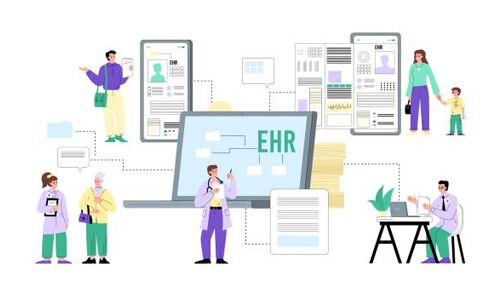Electronic health records (EHR) are essential for medical practices and healthcare institutions to run smoothly on a daily basis. While it can be difficult to transfer data between EHRs, you shouldn’t desert your current EHR replacement strategy.
An efficient strategy covering every aspect, from the analysis of the source data to the validation of the migrated data, is the first step in a successful EHR data transfer. But it goes farther than that. The database’s schema, format, and any proprietary objects that could hold data must all be available to you.
The essential procedures for a successful EHR data transfer will be highlighted in this article.
Examine Dated EHR Data
Conduct a review of the current EHR. Find out how to export data from it using the available methods. Contact the EHR vendor if required to learn the best approach to export data from it. Identify the source database’s brand to see if it is one of the popular ones like Oracle, MySQL, etc.
Using one of the well-known databases is typically easier than working with an obscure proprietary format. Here, you should also carefully examine the coding schemes, data classifications, and fields in the database schema.
Make A Plan
Make a detailed strategy that includes implementation goals. Note specific challenges you have come across with the present EHR system to effectively determine how the new system would address these difficulties.
Additionally, make a list of all the migration-related tasks, such as data retrieval, modification, and loading. Write down the equipment you require for each task. If you need to build scripts or programs to extract and transform data, prepare sufficiently for them.
For sophisticated data migration, consider collaborating with a consultant who has managed a project with a comparable scope. An expert can help you in choosing the right EHR software.
Choose Which Data to Migrate
Analyze carefully which patient data is required for transfer. A lot of data is often kept on file by practices that have been in operation for a very long period. As a result, it’s crucial to identify which data has to be moved and when a PDF note would do.
Migrate the Data
Select the data transfer format that works best for you. You can migrate the data using HL7 if the previous system supports export data in that format. If not, use field and record format to transfer the previous database’s data.
It is necessary to complete field mapping before moving data from the old EHR to the new one. This approach allows you to verify that the right data enters the data fields of the incoming system.
After that, extract, convert, and stack the details from the old database system into a staging database using the required tools. Even if some of the data might not fit precisely into the new database, it still has to be moved.
Examine The New System
Before going live, examine the new system properly. You want to make sure that all of the data has been moved, is accurate, and connects to patient portals faultlessly.
Enter Service
Schedule your go-live date if the new database passes testing with favorable findings. Inform all EHR users of the potential system outage. Users may test the live EHR interface with the updated data by connecting it to the staging database.
Store Your Data in Archives
Make a plan for the outdated EHR system. A proper archive of the data will allow it to be referred to at a later time, so be sure you can do that. Don’t forget to check whether the data conforms with state standards.
Working with the proper data migration specialist can make it easier to transfer data from one EHR to another. Get in touch with a data migration specialist to make sure you can properly relocate EHR data without causing unneeded delays to your business.




